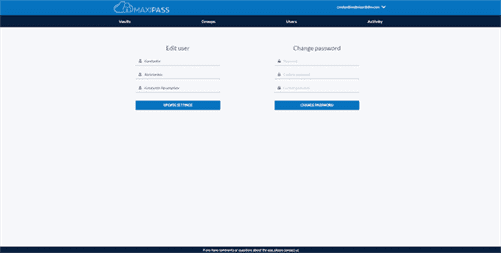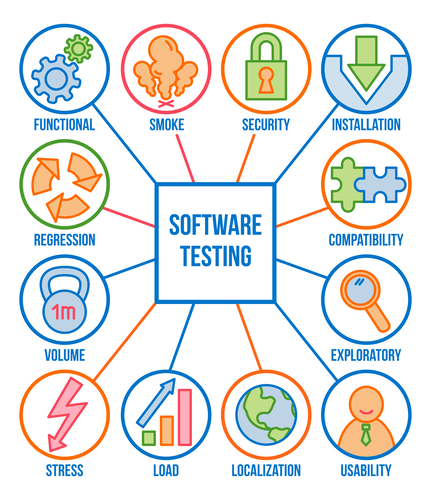Will be interesting to see whether or not community clouds become more popular …although hybrid is 100% the most dominant choice in nearly all industries at the moment. This is my first time visit at here and i am really happy to read about https://www.globalcloudteam.com/ at one place. As is usually the case with any hybrid phenomenon, a hybrid cloud encompasses the best features of the abovementioned deployment models . It allows companies to mix and match the facets of the three types that best suit their requirements.
- A hybrid cloud deployment model combines public and private clouds.
- It signifies how servers are deployed and provisioned over the internet so that various organizations and companies can access these servers without configuring them.
- The consistency of hybrid cloud means they can keep using these investments and take advantage of the automated, programmable, on-demand public cloud model.
- The difference between a virtual private cloud and an on-premises private cloud.
As this model is specially designed for a group of organizations, it lets you easily collaborate and share the data. There are service and licensing limitations because users are offered only general services that are insufficient for complex IT tasks. Setup Benefits – The protocols and configuration of a community cloud must align with industry standards, allowing customers to work much more efficiently. The planning phase is the most important phase because the prerequisites for all following phases and the accompanying procedures will be defined during the planning phase. Mistakes or uncertainties during this phase can affect the whole migration and operation.
The Advantages of a Public Cloud
Will be very interesting to see how developments in AI technology will advance cloud deployment models. I think AI will be used mostly for optimizing cloud workloads, making them faster and more streamlined. It means that it will be integrated with your data center and managed by your IT team. The private cloud offers bigger opportunities that help meet specific organizations’ requirements when it comes to customization.
● You get the scalability of the public cloud and the pricing structure; you only pay for the services you ask for. Between the hardware, software, and training necessary to establish a private cloud – as well as the staff required to initiate it – expect to expend additional resources during the early stages. In turn, you can determine resource use and scale if needs fluctuate without worrying about maintaining equipment or altering a contract. Depending on the service agreement, the service provider may offer this service free or charge a fee based on the number of resources you use. They can be government agencies providing similar services, schools, or religious institutions. Community clouds are best for general services such as reading materials, courses, etc.
Advantages of Hybrid Cloud
This reduces the risk of a single point of failure making critical workloads unavailable. The likelihood of concurrent downtime across multiple cloud providers is extremely low. From a technical standpoint, both private and public cloud generally leverage the same cloud computing principles and concepts. This means they both leverage virtualization, thus pooling network, storage and compute resources, and provide scalability and on-demand provisioning. A hybrid cloud is a combination of several clouds which allows companies to mix and match the facets of the three types that best suit their requirements. Usually, the critical activities are being handled by a private cloud, and those that are considered less important are handled by a public cloud.

The IT resources are hosted on external servers, and users can access them via an internet connection. Changes to an operational environment are inevitable cloud business solutions as a system undergoes routine maintenance. However, some changes may cause significant impacts to the security posture of the cloud service.
On-Premises vs. Cloud vs. Hybrid: Which Cloud Deployment Model Is Best for You?
In this arrangement, storage backup and retrieval services are given for free, as a subscription, or on a per-user basis. Another hybrid cloud deployment model includes using a private cloud with multiple cloud providers in tandem. For example, an organization might use a private cloud for its core business applications while hosting other data in AWS and Microsoft Azure or Google Cloud Platform . A hybrid cloud is a model in which a private cloud connects with public cloud infrastructure, enabling an organization to orchestrate workloads — ideally seamlessly — across the two environments. In this model, the public cloud effectively becomes an extension of the private cloud to form a single, uniform cloud. A hybrid cloud deployment requires a high level of compatibility between the underlying software and services used by both the public and private clouds.

If your business runs a mission-critical system that doesn’t rely on fast response times, such as a human resources application, you can outsource it to a public cloud provider. This allows you to use the public cloud for application hosting and maintenance while keeping control of your data. A cloud deployment model is the type of architecture a cloud system is implemented on. These models differ in terms of management, ownership, access control, and security protocols.
Disadvantages of Private Cloud
If you‘re unsure, there are cloud service provider companies out there that will be happy to help you get started with cloud computing. They can help you choose the right cloud model and configuration, migrate your current systems over to the cloud, and even start building your own cloud-native applications. A community cloud could be built by one organization in an industry, and then rented out to others in the same industry with similar computing and security requirements.

There are several types of cloud deployment models to choose from, each related to a different kind of cloud environment. There are differences in who controls the cloud and access to it and the scale and its primary purpose. Server location is another factor and the things that are fixed and things that can be altered. Some models have more services than others, which may require more work on the user’s part. Cloud deployment is about creating a virtual environment that defines how servers are used and managed. The three most popular cloud deployment models are software as a service , platform as a service , and infrastructure as a service .
Best Cloud Deployment Models Overview
Many public cloud service providers rely on scalability and offer only the most basic service plans. While simple service agreements are beneficial for many users, if you require more customized service plans that fit your business, it may be difficult to find one to meet your needs. A virtual private cloud is a private cloud hosted in a public cloud. A VPC is typically used by an enterprise that needs flexible but secure access to cloud storage, to host websites, or to execute code. By isolating resources and ring-fencing them from a larger public cloud, VPCs get all the benefits of mainstream cloud infrastructure with the privacy and security of private cloud.

Five-Phase-Model of secure migration to a Cloud Service Provider. Contribute to the GeeksforGeeks community and help create better learning resources for all. SaaS solutions have limited customization, which means they have some restrictions within the platform. PaaS is simple and very much convenient for the user as it can be accessed via a web browser. The overall Analysis of these models with respect to different factors is described below.
Cloud Deployment Models with Examples: Public, Private, Community, Hybrid
The term “multicloud” has come into the IT architect’s vocabulary fairly recently. Multicloud refers to the usage of two or more public clouds at a time, and possibly multiple private clouds. This is not to be confused with hybrid cloud, where you use different deployment models such as private and public. Private cloud is a type of cloud computing that delivers similar advantages to public cloud, including scalability and self-service, but through a proprietary architecture. A private cloud, also known as an internal or corporate cloud, is dedicated to the needs and goals of a single organization whereas public clouds deliver services to multiple organizations. The public cloud is owned and operated by large cloud service providers as a geographically distributed, global, often shared IT infrastructure, with logical separations for secure multi-tenancy.